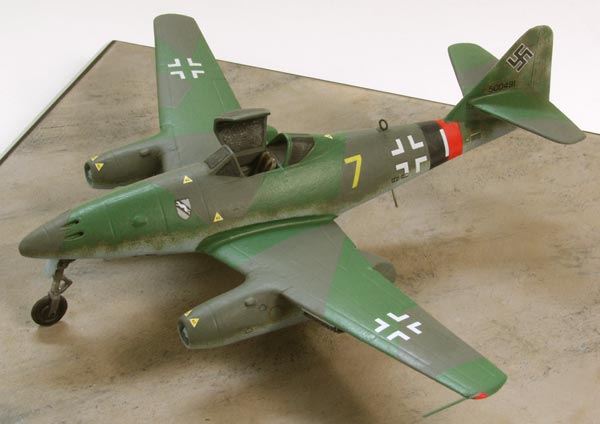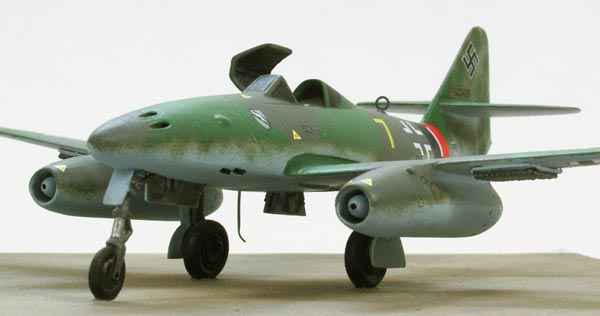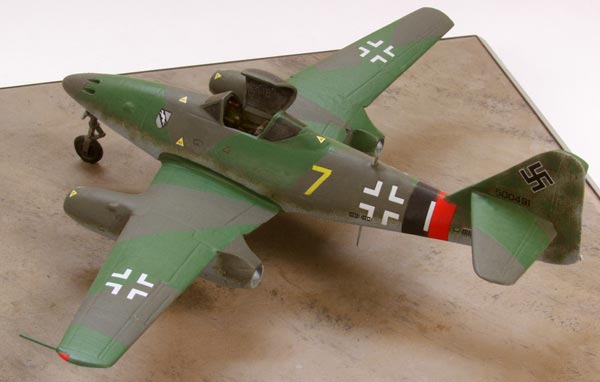Messerschmitt Me 262A-1a
Messerschmitt Me262A-1a ‘Yellow 7’ Wk Nr 5004911
11./JG7, Oberfeldwebel Heinz Arnold, Prague-Ruzyn, April 1945.
Generalleutnant Adolf Galland, who would later become more familiar and associated with the Messerschmitt Me 262, is reported to have said after his firat flight in the aircraft that it was “like being pushed by an angel”.
The world’s first operational jet fighter, the Me 262 was first flown on jet power on 18 July 1942; its introduction to front-line service was early in 1944 with test and development unit Erprobungskommando 262. The build up of deliveries was fairly slow and its first kill, a Mosquito, was by Lt. Alfred Schreiber on 26 July 1944. Because the aircraft’s primary role was changed by order of Adolf Hitler to that of “Blitz Bomber” its use as an interceptor took longer to get established than it should have done, but by the turn of the year Jagdgeschwader 7 was taking its place in the daylight defence of the Reich with the jet. Over 1400 of the aircraft were built, but many of these were destroyed by bombing before they could be used by operational units. Heinz Arnold’s “Yellow 7” wears the red/blue identifying band of JG.7, and carried its pilot’s kill record just behind this band; the horizontal mark records the forty-two aircraft destroyed with JG.7, and the seven kills while flying the Me 262 are marked vertically. Like many Me 262s ended its war based at Prague; Arnold went missing on a ground attack mission on 17 April, and the pilot who took “Yellow 7” over, Lt. Fritz Muller, surrendered it to Allied forces at Lechfeld on 8 May. After many years it was restored to display condition by the Smithsonian’s National Air and Space Museum in Washington, where it can be seen today.
Scale 1:72 Wingspan 6.84″ (174 mm)
Base size 7.71″ (196 mm) square (No. 5)
Weight not including base 12 ozs (337 grams)




